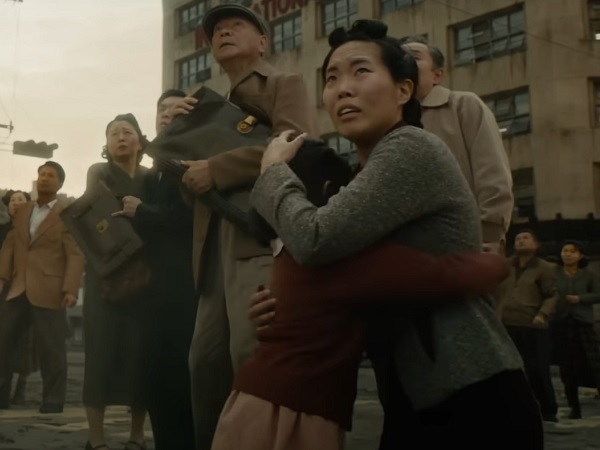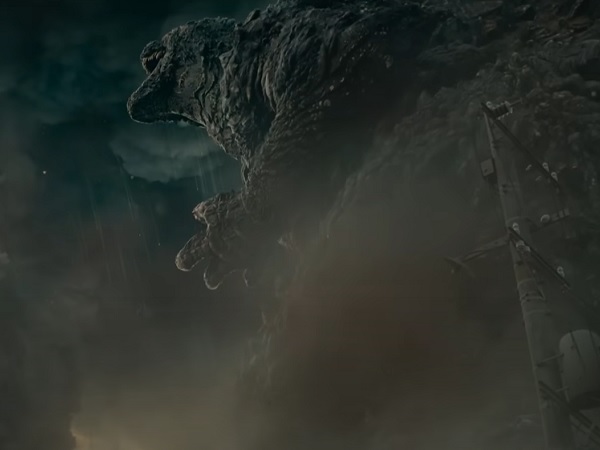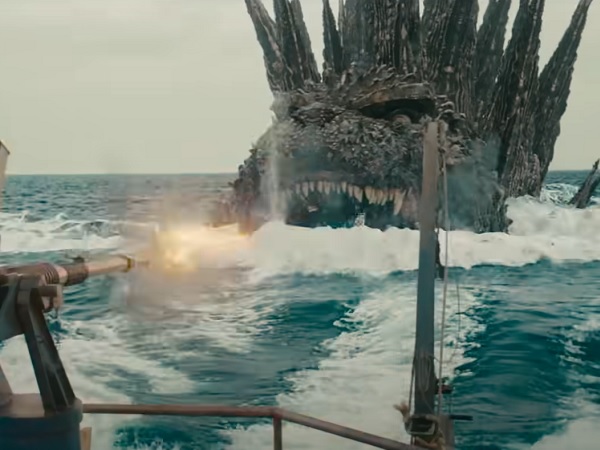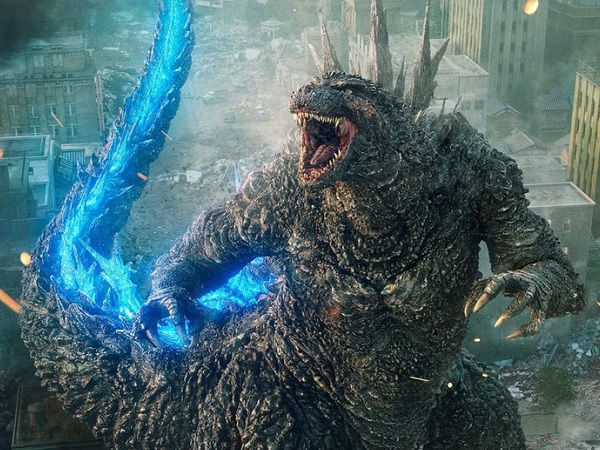In Godzilla Minus One, the year is 1945 and in the dying days of World War II, kamikaze pilot Kōichi Shikishima lands his plane on Odo Island, before claiming there is a fault with his vehicle. The reality is, there is no fault with the plane but Kōichi knows the war is coming to an end and he wants to survive the conflict.
Shortly after arriving, the island is attacked by a monster, which the locals refer to as Godzilla. Kōichi has an opportunity to fight back, using artillery from his plane to shoot Godzilla, but he freezes up and is knocked unconscious.
When Kōichi wakes up, most of the islanders are dead, having been killed by Godzilla. Filled with overwhelming guilt over his inaction, Kōichi leaves Odo and returns home.
Making his way back to his town, Kōichi is horrified to discover his home is now a derelict wasteland. His parents and neighbours were killed in the war, and there’s nothing left but rubble and destruction.
As the months roll on, times remain difficult and work is scarce. However, Kōichi takes on a new government job, removing mines from the sea around Japan.
The work is dangerous, but it pays well and along with a small crew, Kōichi takes to the water and begins the process of locating and destroying the mines. But things take an unfortunate turn when Godzilla reappears and not only threatens the life of Kōichi and his colleagues, but also the citizens of Japan.
Godzilla is making his way towards Tokyo, and unless he can be stopped, countless lives hang in the balance. But can Kōichi overcome his fear of death, as well as his previous encounter with the creature, in order to help stop Godzilla’s rampage?

Written and directed by Takashi Yamazaki, Godzilla Minus One is the latest entry in the long-running series of Japanese Godzilla movies from Toho Studios. Starrring Ryunosuke Kamiki and Minami Hamabe, the film is Toho’s 33rd instalment and it is currently playing in US cinemas before opening in the UK on Friday 15th December.
Taking inspiration from Godzilla (1954), as well as the likes of Jaws (1975), Godzilla Minus One is a carefully considered, brilliantly written monster movie, which is engaging, touching, and occasionally a bit scary. Godzilla Minus One is a treat for long-time fans of the series, while at the same time it is also a superb jumping on point for those who are new to the Godzilla franchise.
It doesn’t matter if you have never watched a Godzilla movie before, Godzilla Minus One is a self-contained tale. In this film, Godzilla turns up, wreaks havoc, and humans have to fight back.
There is more to Godzilla Minus One than just this, but in essence this is the basic template. So, if you’re concerned that you’ve got 32 previous Godzilla movies to catch up on, don’t be, just simply watch this one.

What’s great about Godzilla Minus One is that while the film includes all of the elements expected from a film of this nature (death, destruction, a big freakin’ lizard monster, etc), it doesn’t lose sight of the need for fully-rounded human characters. Too many monster movies overlook the human players in favour of getting to the creature, resulting in a story that only becomes interesting when the star attraction is on screen.
Godzilla Minus One doesn’t make this mistake, and instead presents a film which focuses on the human side of the story. Put Big G to one side for a moment, and at the heart of Godzilla Minus One is a tale about a man who has spent years of his life battling his inner demons and who is finally forced to confront them.
Kōichi didn’t complete his role as a kamikaze pilot, he was unable to fight Godzilla during his initial encounter, and he returns home from war to find his nearest and dearest gone. All of this weighs heavy on his soul, and this becomes a significant part of the film.
Then go beyond this and you’ve got a movie about a nation trying to move on from war, but finding themselves pulled back into another conflict. Post-1945 should be a time for rebuilding and moving forward, but the arrival of Godzilla disrupts these plans and keeps everyone in a seemingly endless cycle of violence.
So, while Godzilla is a big draw, and the clear selling point of the movie, writer/director Takashi Yamazaki doesn’t believe he is the be-all and end-all of the film. He is the antagonist, and a very impressive antagonist he is too, but the film is much more than just one character.

Speaking of Godzilla, he looks both fantastic and creepy in equal measure. The visual effects for Godzilla work well, and the budget has clearly been used to make the most of his limited screen time.
Godzilla is used sparingly in the film, so do be aware of this, but not only does this help to create some suspense, it also ensures he’s not overused. Sure, it would be nice to see a bit more of Godzilla in Godzilla Minus One, but Yamazaki uses him enough to create the right level of threat and menace.
Similar to the shark in Jaws or the dinosaurs in Jurassic Park (1993), there’s no need to over play the big bad. Those films didn’t cram their monsters into every frame, and the same applies to Godzilla Minus One.
The film brings Godzilla in when needed, but keeps him off screen when the movie simply doesn’t require his presence. This way when he does show up it makes an impact.

Godzilla Minus One is impressive stuff. It finds the right balance between the desire for spectacle and the need for a strong story, to create a monster movie that doesn’t fall down in its construction.
Those who love Godzilla will be happy to see him tearing up the screen and smashing buildings with careless abandon, while those usually put off by paper thin characters and a shoddy story need not worry. Godzilla Minus One is a solid action-drama which has something to say, while also being thoroughly enjoyable.
__
__
Thank you for taking the time to read this review on It’s A Stampede!. For more reviews, check out the recommended reads below.

Leave a comment